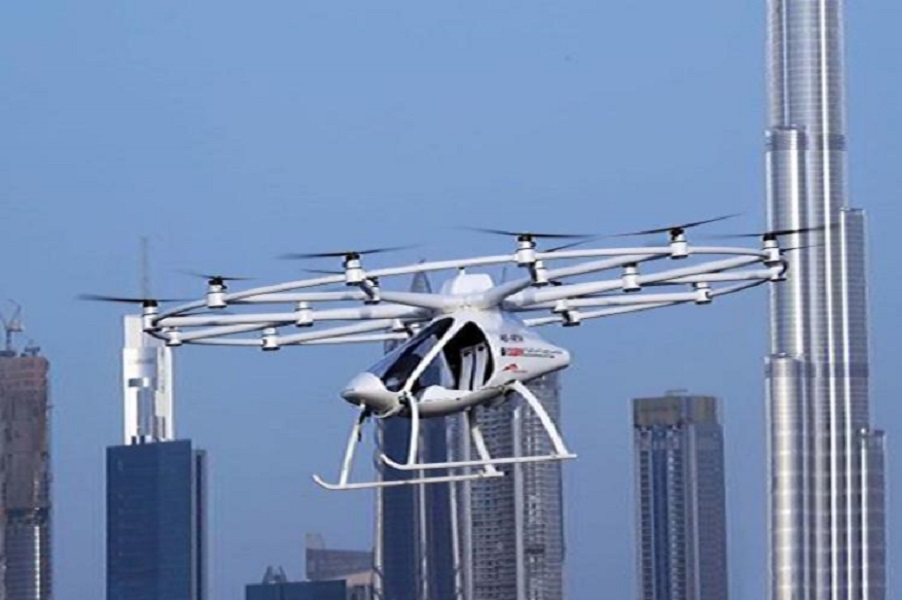Dubai tests world’s first self-flying taxi
By Aliheydar_Rzayev Tuesday, 26 September 2017 5:59 PM

Gulf Today -- Sheikh Hamdan Bin Mohammed Bin Rashid Al Maktoum, Crown Prince of Dubai, attended the maiden concept flight of the Autonomous Air Taxi (AAT), a vehicle that will be used for the world’s first self-flying taxi service set to be introduced by Dubai’s Road and Transport Authority (RTA).
The two-seater AAT, capable of transporting people without human intervention or a pilot, has been supplied by Volocopter, a Germany-based specialist manufacturer of autonomous air vehicles. The test flight was held at a location near the Jumeirah Beach Park.
“After the remarkable success of the first driverless metro in the region, we are glad to witness today the test flight of the Autonomous Air Taxi,” said Sheikh Hamdan. “This is another testament to our commitment to driving positive change. We are constantly exploring opportunities to serve the community and advance the prosperity and happiness of society.”
He further said that adopting advanced innovative technologies and applications that help to enhance services for the community is key to topping global competitiveness rankings.
 “Encouraging innovation and adopting the latest technologies contribute not only to the country’s development but also build bridges into the future,” he added.
“Encouraging innovation and adopting the latest technologies contribute not only to the country’s development but also build bridges into the future,” he added.
He stressed the importance of the transportation sector, which he said is a vital driver of the development process and an indicator of the level of advancement of the nation.
He hailed the remarkable progress achieved in this sector through a number of landmark projects that have maintained the highest international standards while remaining true to the principles of environmental sustainability.
Mattar Al Tayer, Director-General and Chairman of the Board of Executive Directors of the RTA, said: “The Autonomous Air Taxi has a variety of unique features that include top security and safety standards, and multiple redundancies in all critical components such as propellers, motors, power source, electronics and flight controls.
“It is also fitted with optional emergency parachutes, nine independent battery systems, and a battery quick-charge and plug-in system, which takes two hours to reach full charge in the prototype version, a time that will be significantly reduced in the production version.”




























Add new comment